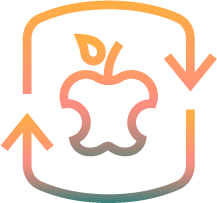Promoting climate solutions with data analytics. Released in April, 2025. 
The Solutions Tracker can be found here: https://climatesolutions.gatech.edu and here: www.drawdownga.org.
It visualizes data on 23 solutions using data from many sources (see tables to our data links here).
Drawdown Georgia Phase One (2019-20): Selecting High Impact GA Solutions
1. Overview
2. Technical Review of 75 possible solutions for Georgia
The Academic Research team presented the findings of the carbon sinks and Mt CO2 reductions that are technically feasible to reach achieve a net zero GHG footprint and sell excess credits into carbon offset markets.

The Drawdown Georgia project was spotlighted in a half-day of activities at the August 6, 2020, Southface Institute’s Greenprints Conference. The project was introduced by John Lanier (Ray C. Anderson Foundation) and Daniel Rochberg (Emory University), then described in some detail by Marilyn Brown (Georgia Tech). Five high-profile Drawdown Georgia solutions were then introduced: Rooftop Solar (Marilyn Brown), Demand Response (Matt Cox), Composting (Sudhagar Mani), Retrofitting (Shane Totten), and Electric Vehicles (Rich Simmons). Before breaking into discussion sessions, Michael Oxman (Georgia Tech) described the Beyond Carbon considerations. The break-out discussions were synthesized in Miro Boards – characterizing Accelerators, Barriers, Beyond Carbon, and Promising Approaches. The participants offered lots of ideas and insights, which was a key goal of the event.
3. Down-select High Impact Solutions


Read the Working Paper and Appendix
This working paper (on left) describes the first phase of our research, involving a fact-based assessment of Project Drawdown's solutions, to identify those that could significantly reduce Georgia’s carbon footprint by 2030. The Appendix (on right) includes logic diagrams, info sheets, and references describing 75 individual solutions. Below is a quick reference of the 20 high impact solutions, organized by sector, which are retained for further research into costs and benefits required for carbon drawdown.

4. Detailed Analysis of 20 High Impact Solutions
20 Tech Briefs and Powerpoint Presentations
Electricity
 Cogeneration
Cogeneration
16 additional 25 MW cogen plants using waste heat to generate electricity Demand Response
Demand Response
187,000 households participate in a demand-response program, reducing 10% of their peak demand Rooftop Solar
Rooftop Solar
295,000 new 5 KW home solar systems Large-Scale Solar
Large-Scale Solar
10 additional 100 MW solar farms and 36 additional 5 MW community solar systems Landfill Methane
Landfill Methane
4 typical landfill facilities with 5 MW gas-to-energy systems
Transportation
 Alternative Mobility
Alternative Mobility
Eliminate 2.5% of car trips Electric Vehicles
Electric Vehicles
Replace 250,000 gasoline-powered vehicles with EVs Energy-Efficient Cars
Energy-Efficient Cars
Improve fleetwide fuel economy for light duty vehicles 3% Energy-Efficient Trucks
Energy-Efficient Trucks
Reduce diesel fuel use in medium and heavy duty trucks 10% Mass Transit
Mass Transit
320,000 additional households in Transit Oriented Developments
Buildings & Materials
 Retrofitting
Retrofitting
Retrofit 20% of Georgia’s homes to save 20% of energy Recycling /Waste Management
Recycling /Waste Management
Recycle at least 20% of current paper waste Refrigerant Management
Refrigerant Management
Retrofit refrigeration systems in all Georgia grocery stores to refrigerant leakage rate of 8%
Food & Agriculture
 Composting
Composting
Divert ~2 million tons of organic wastes including food waste from landfilling to composting by 2030 Conservation Agriculture
Conservation Agriculture
Adapt additional 1.6 million acres of croplands into conservation agriculture practices in Georgia Plant-Rich Diet
Plant-Rich Diet
25% of Georgia population shifts to plant-rich or low-carbon diets Reduced Food Waste
Reduced Food Waste
Reduce about 12% of current food waste
Land Sinks
 Temperate Forests
Temperate Forests
Increase forest cover by 3.4% with mixed tree species Afforestation & Silvopasture Plant 7% of current pastures with mixed hardwood & loblolly tree species using staggered planting times
Afforestation & Silvopasture Plant 7% of current pastures with mixed hardwood & loblolly tree species using staggered planting times Coastal Wetlands
Coastal Wetlands
Increase Georgia’s coastal wetland area by 71%
5. Directory to Multi-Disciplinary Workgroups
Six sector workgroups are comprised of faculty, researchers, and graduate students at four universities: Georgia Tech, University of Georgia, Emory University, and Georgia State.
Activities:
1. Hosted a Workshop at the Kendeda Living Building, Georgia Tech, November 6th, 2019

2. Presented workplans and preliminary results at the 2019 Georgia Climate Conference, Emory University
- Overview Presentation - Dr. Marilyn Brown
- Workgroups 1, 2, & 3 Progress - Dr. Rich Simmons
- Workgroups 4 & 5 Progress - Dr. Puneet Dwivedi
- Workgroup 6 Progress - Dr. David Iwaniac
